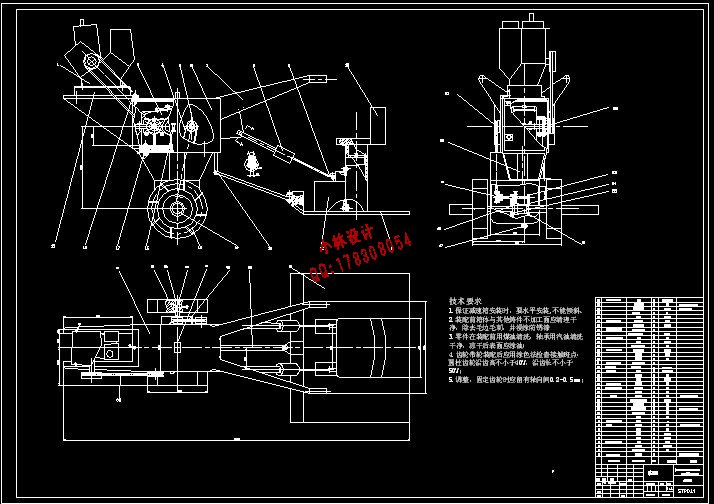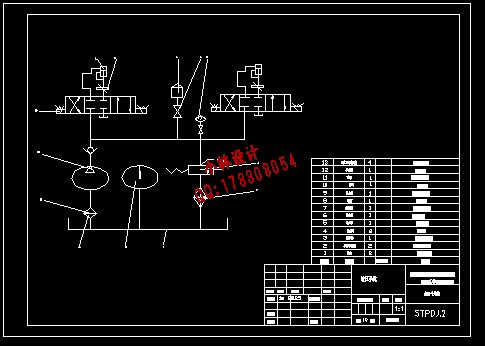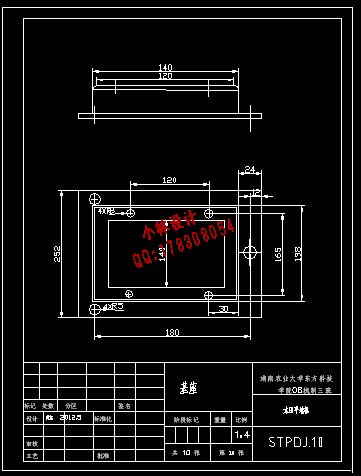|
设计简介 |
设计描述:
文档包括:
说明书一份,33页,约15000字
CAD版本图纸,共10张
水田平地机械结构设计
摘 要:由于我国土地形状复杂,类型繁多,且纬度跨越大,故我国各省的农业机械各有差异,其现代化程度不同。我省土地类型主要以丘陵为主,但又是以水稻为主要粮食的地区。无法适用于大规模的生产,但又是水田,泥泞土地的作业有一定的难度。本文基于机械设计和相关的理论研究,利用减速箱,单片机和液压装置设计了一台水田平地机。由于本人能力有限,此文只着重设计了其传动装置与平地的液压装置。此次设计的水田平地机特点是结构简单,受力均匀,运行平稳,工作效率高。
关键词:水田平地机 ;耕整机 ;手推 ;液压系统设计
Paddy field leveling machine structure design
Abstract: due to land complex shapes, type range and latitude spans, of agricultural machinery in all the different, varying degrees of its modernization. I mainly hilly land in type, but with rice as the main food of the region. Cannot be applied to large-scale production, but paddy fields, muddy land a job with a certain degree of difficulty. This article is based on research on mechanical design and theories related to the, using gearboxes, hydraulic design of single-chip and a grader for paddy field. Because of my ability is limited, this article only focuses on the design of its gear and leveling of hydraulic equipment. Grader for paddy field feature of the design is simple, uniform, stable operation, high efficiency.
Keywords: grader for paddy field; cultivator; hand; design of hydraulic systems
目 录
摘要……………………………………………………………………………………1
关键字…………………………………………………………………………………1
引言……………………………………………………………………………………2
1 绪论………………………………………………………………………………2
1.1 水田平地机在国内外的发展和使用……………………………………3
1.2 设计水田平地机的意义…………………………………………………3
1.3 作品的结构特点与优势…………………………………………………3
2 水田平地机的方案选择…………………………………………………………4
3 柴油机的选择……………………………………………………………………4
4 减速箱的设计……………………………………………………………………5
4.1 减速箱的传动比分配……………………………………………………5
4.2 计算传动装置的运动和动力参数………………………………………7
4.3 设计V带…………………………………………………………………7
4.4 齿轮的设计………………………………………………………………8
4.4.1 高速齿轮的设计…………………………………………………10
4.4.2 低速齿轮的设计…………………………………………………11
4.5 轴的设计…………………………………………………………………11
4.5.1 高速轴的设计与校核……………………………………………11
4.5.2 中间轴的设计与校核……………………………………………14
4.5.3 低速轴的设计与校核……………………………………………17
4.6 高速大齿轮及带轮的设计………………………………………………22
5 液压系统的设计及整体方案的确定……………………………………………24
5.1 确定液压系统的压力和流量……………………………………………24
5.2 液压缸主要尺寸的确定…………………………………………………25
5.3 各主要液压器件选择及其工作原理……………………………………25
5.3.1 液压马达…………………………………………………………25
5.3.2 确定管道尺寸……………………………………………………26
5.3.4 液压油箱容积的确定……………………………………………26
5.3.5 液压系统温升计算………………………………………………26
5.3.6 溢流阀……………………………………………………………27
5.4 其他………………………………………………………………………27
6 润滑方式的确定以及其它的一些要求…………………………………………27
7 总结………………………………………………………………………………28
参考文献……………………………………………………………………………28
致谢…………………………………………………………………………………29
|












